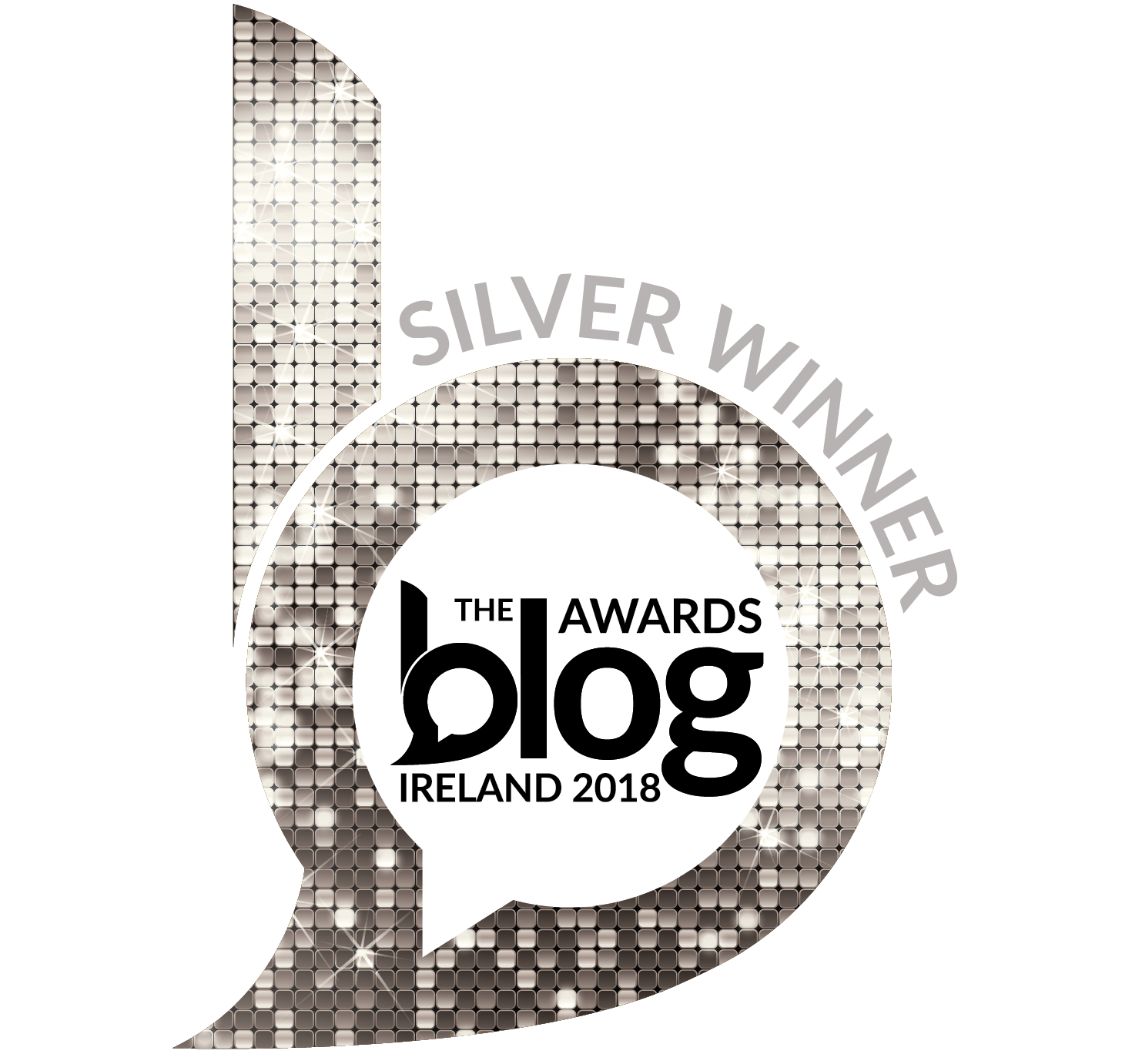For a while now my interest in  sustainability has been growing exponentially and I am even going to write my second dissertation about it. I am truly fascinated with how businesses can find new ways of tackling sustainability challenges and what role they can play in creating a bright future for us on Earth.
sustainability has been growing exponentially and I am even going to write my second dissertation about it. I am truly fascinated with how businesses can find new ways of tackling sustainability challenges and what role they can play in creating a bright future for us on Earth.
Therefore, when I heard about H&M collecting all your old clothes in their stores and then recycling or reusing them I was impressed with the initiative and decided to do some research on the brand and its sustainability and CSR activities.
What I’ve discovered was that H&M is not only trying to reduce the environmental impact of its operations, but is making commendable efforts into putting sustainability at the heart of the entire business. This is why I thought I should tell you more about the retailer’s practices in this little case study below.
In the past few years we’ve witnessed a number of corporate crises because of socially irresponsible organisational activities and it is obvious that society is increasingly putting a lot more pressure on corporate consciousness. Two examples:
In the mid 1990s Shell was planning to sink an old platform in the North See because it was cheaper to sink it than bring it on shore and dismantle it. This was a huge environmental issue, which Greenpeace didn’t hesitate stopping; it was polluting the ocean! Environmentalists and many others were on board against Shell too.
For Kit Kat Nestle was using palm oil from companies that were apparently endangering Indonesian rainforests, threatening the livelihoods of locals and pushing orang-utans towards extinction. Greenpeace didn’t hesitate here either and this became a massive crisis for Nestle that went totally viral with the help of social media, much supported by the general public.
Consumers do care about sustainability. According to new research, two-thirds of consumers globally believe they “have a responsibility to purchase products that are good for the environment and society.” Therefore, effectively embedding sustainable practices into the business can only become an enormous competitive advantage.
Going back to H&M, the fashion brand has obviously realised that continuing with ‘business as usual’, focusing only on short-term profits, inefficiently utilising raw materials, disregarding human rights and taking, but not giving back, is not the way to a firm of the future. However, considering the social, environmental and economic implications of their operations, including those throughout the entire supply chain, and accordingly embedding sustainability practices into the core of their business can both secure the approval and loyalty of customers as well as the long-term success (and existence) of the company. H&M calls this ‘conscious’ – “the name of all the work we do to offer you more sustainable fashion, both today and tomorrow.”
[youtube width="550" height="450"]http://www.youtube.com/watch?v=A9nDkoKpIys [/youtube]
To achieve its goals and stay intact with its vision, H&M has developed seven ambitious commitments as part of their sustainability strategy that everyone in the company has to work towards to offer both fashion and sustainability, not one or the other.
#1 Provide fashion for conscious customers
The Swedish brand has made a commitment to offer clothing, shoes and accessories that are “produced, transported and sold with care for people and the environment.” The company understands that it is customer needs and desires which need to be put at the centre of their business in order to establish closer relationships with consumers and deliver true value to them. H&M also knows that the public now increasingly demands corporate conscience, which is why a sustainable approach can be a massive corporate strength to drive customer loyalty, but also employee commitment, better business performance and so become a competitive advantage. Here’s where the retailer’s Conscious Collection fits in, which demonstrates that green fashion does not undermine design or looks. For example, one of the company’s CSR targets is to source all cotton in the range sustainably by 2020 the latest.
Celebrities too recognise that green can also be fashionable – just look at Amanda Seyfried, Michelle Williams, Viola Davis and Kirsten Davis and Helen Hunt at the Oscars ceremony this weekend who have chosen pieces from H&M’s Conscious Collection for red carpet events. (This does say a lot, doesn’t it?)
Here’s another great example. Partnering with Brick Lane Bikes H&M is launching its ‘green cycling’ line for men early March this year. It’s an 11-piece men's cycling collection, entirely made up from sustainable materials, which on top of it includes all technical details needed for better cycling while still being stylish and fashionable. The line aims to promote modern urban cycling and so sustainable lifestyle – as we all know cycling in contrast to driving is emission-free and so environmentally friendly – but it is also a great way to stay healthy, reduce stress and lead a green life. Isn’t this really cool?
#2 Choose and reward responsible partners
The Swedish fashion company does not own any of the factories that produce its items; they are owned or subcontracted by 750 suppliers around the world (the majority in Asia and Europe). Towards becoming a truly sustainable company comes also taking responsibility for the whole value chain, because responsibility doesn’t stop with company’s immediate activities. H&M recognises this and therefore works closely with its supply chain to provide better working conditions, avoid human rights violations and reduce negative environmental impact. These are outlined in company policy to guide everyday work (Code of Conduct), which is evaluated by H&M auditors, who regularly check work process in factories throughout the entire supply chain to ensure that everything is done according to standards and so promote good practice.
Being proactive and working in close partnerships with suppliers, H&M is able to find both efficient and innovative ways of operating that would then save money for the entire supply chain and create a resilient business ecosystem. For example, H&M has developed a new water management strategy (see No. 6 below), which will not only impact the company’s own operations, but those of the entire supply chain. Another example is H&M’s involvement in the Better Cotton Initiative (BCI), which is a long-term multistakeholder initiative that develops and promotes good farm practices to allow more cotton to be grown while reducing water and chemical use and protecting working conditions and biodiversity. This is a different approach towards leadership, an approach that uses collaboration and teamwork rather than competitiveness and hierarchical control in order to be adaptive, flexible and capable of reacting to change quickly and thriving in turbulent times.
#3 Be ethical
Social obligation and integrity are values that should guide a business on its way to sustainability. Such corporate values determine the ethical approach of the Swedish brand, which believes that “showing respect towards everyone who contributes to H&M’s success is fundamental to our business”, them being customers, employees or business partners. Encouraging diversity, fighting against corruption, engaging employees and ensuring they are happy, being fair towards suppliers and complying with laws and regulations are the driving ethical forces behind the retailer’s operations. For example, in 2003 the company set in place a Code of Ethics with a zero tolerance policy towards bribery and corruption.
#4 Be climate smart
It is not just people who have a moral obligation towards nature and the environment; it is brands too, because they, as a group of many individuals, have the power and resources to make significant changes and improvements. Such philanthropic understanding guides H&M when it comes to dealing with the pressing issues of climate change and global warming.
Because a big part of the business involves the consumption of energy for transport and electricity, the company is making efforts to take necessary actions to become as efficient as possible, for example by using renewable sources. There’s much more needed to be done in this area, which is why the brand has set aspiring goals such as contributing to more greenhouse gas reductions than their operations emit and encouraging action on climate change beyond the scope of their direct operations through partnerships and cooperations, such as emissions reduction initiatives with transport providers and supplier factories or lobbying governments for stricter regulation, but also by trying to inspire the customers themselves to become more sustainable when it comes to buying and using their products.
One of H&M’s activities in this area is its objective to reduce carbon emission by working closely with supplier factories. These are required to monitor energy use and greenhouse gas emissions for production and share the results with the clothing retailer. Some also have to participate in a regional Supplier Energy Efficiency Programme (SEEP) that the Swedish brand sets up in partnership with different energy service companies around the world to review the scope for efficiency gains as well as to provide training, workshops and support for developing solutions and action plans.
#5 Reduce, reuse, recycle
Since the industrial revolution many have been entirely focused on short-term, quick returns that they haven’t stopped to think about what happens will all the resources used for production. For years, the prevailing business paradigm has been based on the ‘take, make, waste’ philosophy – simply using Earth’s resources as much as possible, developing products and then just disposing them when they were no longer viable. This, however, is not sustainable, this is wasteful and just not clever, because now we are facing serious challenges such as decreasing natural resources (reserve of oil is expected to last only 50 more years!), water scarcity, population growth, urbanisation, ecosystem decline – in the 21st century volatility can be seen in all aspects of life and presents huge risks for businesses and society. As David Brower, Executive Director of Sierra Club, says: “There is no business to be done on a dead planet.”
I am very fond of Giles Hutchins’ work and his beliefs that businesses need to look at nature for inspiration how to remodel their operations. Nature doesn’t produce waste; everything in nature becomes part of something else; it’s an endless cycle, where one piece becomes part of the life of another – waste becomes food. The general approach to business today is nowhere close to nature’s sustainable way of operating; it is not fit for purpose.
With its activities H&M is trying to address the triple bottom line (people, planet, profit or social, environmental, economic) and is making efforts towards turning the goods of today into resources of tomorrow. The brand tries to avoid waste at every level of the value chain, starting from production, packaging, transport and up to the way consumers use and dispose their products with the ultimate aim “to send zero waste to landfill.”
Here’s where the retailer’s green-oriented campaign that involves the collection and recycling of clothes comes in place. H&M is the first fashion company to launch such a global garment recycling programme, aiming to improve the ecological footprint of the fashion industry by encouraging people to bring clothes of any brand, in any condition or quality to the brand’s stores. To get more people involved the Swedish clothing giant has promised that for each and every bag of recyclable clothes brought to the stores customers will get a discount voucher for their next purchase.
Such an initiative is a truly great idea to encourage the community to lead a more sustainable life and contribute to reducing the negative environmental impact by allowing H&M recycle the clothes instead of just letting them end up in a landfill somewhere around the world.
#6 Use natural resources responsibly
Using natural resources is an undeniable part of H&M’s business operations for production, packaging, transport, store lighting etc. The company’s stand here is its understanding that resources are scarce and cannot be taken for granted, which is why they need to be used responsibly. Furthermore, as the Swedish company explains, “growing scarcity tends to mean rising costs, so resource efficiency will increasingly be seen as a source of competitive advantage in our industry.” The brand has therefore committed to conserving water, soil, air and species, by engaging company stakeholders (suppliers, customers, partners, communities and governments), raising awareness about these issues and taking responsible actions.
For example, recognising what massive role water plays in their supply chains, H&M has teamed up with the World Wildlife Foundation (WWF) for an ambitious three-year partnership to set new standards for water stewardship in the fashion industry. This is a really impressive project, which addresses a rising global issue – water scarcity. In Asia, and especially in Bangladesh and China, where many of the brands’ products originate from, a very large amount of fresh water goes into the production of clothing pieces for the textile industry – in Bangladesh the number is 1,500bn litres of water, much of which then becomes chemically-charged waste. To tackle this issue the Swedish brand’s new water management strategy is focusing on five key areas to educate employees, partners and customers: raising awareness around water, increasing knowledge about water impacts in the value chain, internal actions around water management, engaging external stakeholders and influencing governments on water policy. WWF’s role here is its knowledge and expertise in the local area, including when it comes to politics and public policy, which will offer great support for the global brand. According to WFF, this is the first time a fashion brand will apply such a comprehensive model across their whole business.
#7 Strengthen communities
H&M is part of a number of communities globally, including where their stores are located as well as throughout their supply chain. The business has an impact on society and is responsible for more than one million jobs around the world. Encouraging and embracing close relationships with various stakeholders to meet the needs of communities is essential for successful operations, which is why in our volatile times of economic uncertainly there is a need for a ‘symbiotic relationship’ between business and society to drive positive changes for all. As Michael Porter and Mark Kramer put it, the success of the company and the success of the community need to become mutually reinforcing. H&M understands this principle of shared value and that as a global brand it has a stakeholder obligation to invest in projects that benefit both the communities and so its business. These address issues such as employment rights, education, health, water and sustainable raw materials.
For example, together with UNICEF the clothing giant is working on a project called ‘All for children’ aimed at protecting the rights of poor children around the world. Another initiative is the collaboration with WaterAid since 2002 to enable the world’s poorest people gain access to safe water, sanitation and improved hygiene. Furthermore, since 1999 H&M has been running a training centre in Dhaka, Bangladeshi capital, giving 100 young people each year the opportunity to become industrial sewing machinists.
As you can see these seven commitments underline the entire H&M business. They are becoming the core values that allow the company to create real value for all stakeholders in a sustainable way. Embedding sustainability in each and every part of the organisation is the only way towards the firm of the future.
(Note, these videos were uploaded in 2008, when some hadn’t even started thinking about how to improve their operations to become more sustainable. That’s what I call a brand with a vision for the future.)
And here are some of H&M’s achievements so far:
- 300,000,000 litres of water saved in denim production
- 2.3 million garments donated to charities
- 72% females in management positions
- 50% of Board members are men and 50% women
- No.1 use of organic cotton worldwide
- 500,000 quality tests each year
- 440,000 garment workers in Bangladesh educated on their rights
- 3,600 hours of sustainability training delivered to H&M buyers and designers
- 100% of plastic bags are made from recycled material
- 90% of the paper used for making mail order packages is recycled
- 100% of cosmetic products made without animal testing
- 38,347 people provided with access to clean drinking water
These facts and figures and the progress towards them can be found in H&M Conscious Sustainability and CSR Reports, which the clothing retailer has been publishing since 2002. Such reports present evidence whether brands take their sustainability initiatives and efforts seriously by showing what progress they make towards their objectives.
H&M still has a way ahead to go to become a 100% sustainable company, but what matters is that it is making fundamental efforts into becoming a truly economically, socially and environmentally conscious business. It doesn’t happen overnight, it’s a journey that takes time and requires many steps, and I believe H&M is on the right path. The company is a great example of how sustainability has to become an integral part of each operation, of the entire business, not just be a separate business unit. The Swedish retailer is indeed taking a positive lead on sustainability in the fashion industry. This deserves admiration and I am personally impressed and inspired (I think I might even go and check out what they have in store now).
And as final, two of my favourite sustainability quotes that are so simple, yet so true and logical and seem to also guide H&M’s business decisions and operations:
Sustainable development is development that meets the needs of the present without compromising the ability of future generations to meet their own needs.
The Brundland Commission
Those businesses that do well whilst doing good are the ones that will thrive in the coming decades. Those that continue with ‘business as usual’, focused solely on profit maximisation, shall not be around for long (and don’t deserve to be).
Richard Branson
Image: YouTube video






